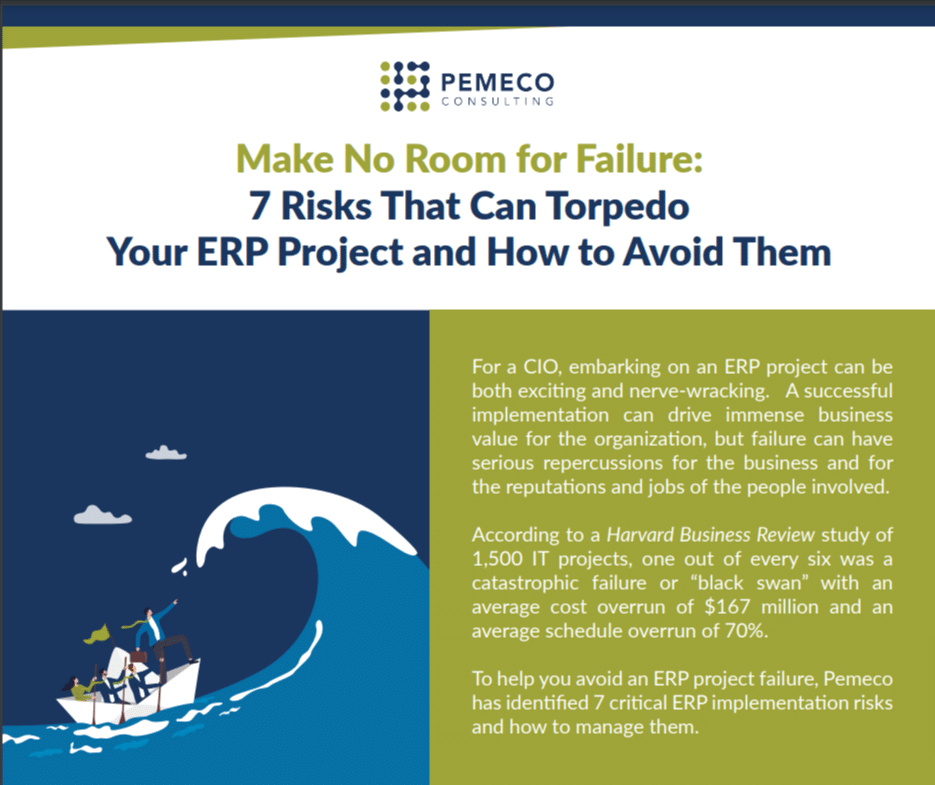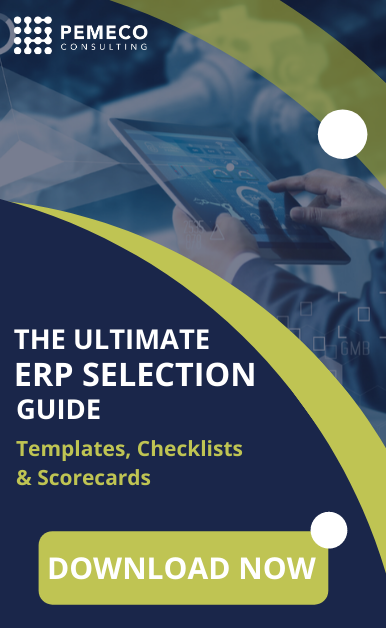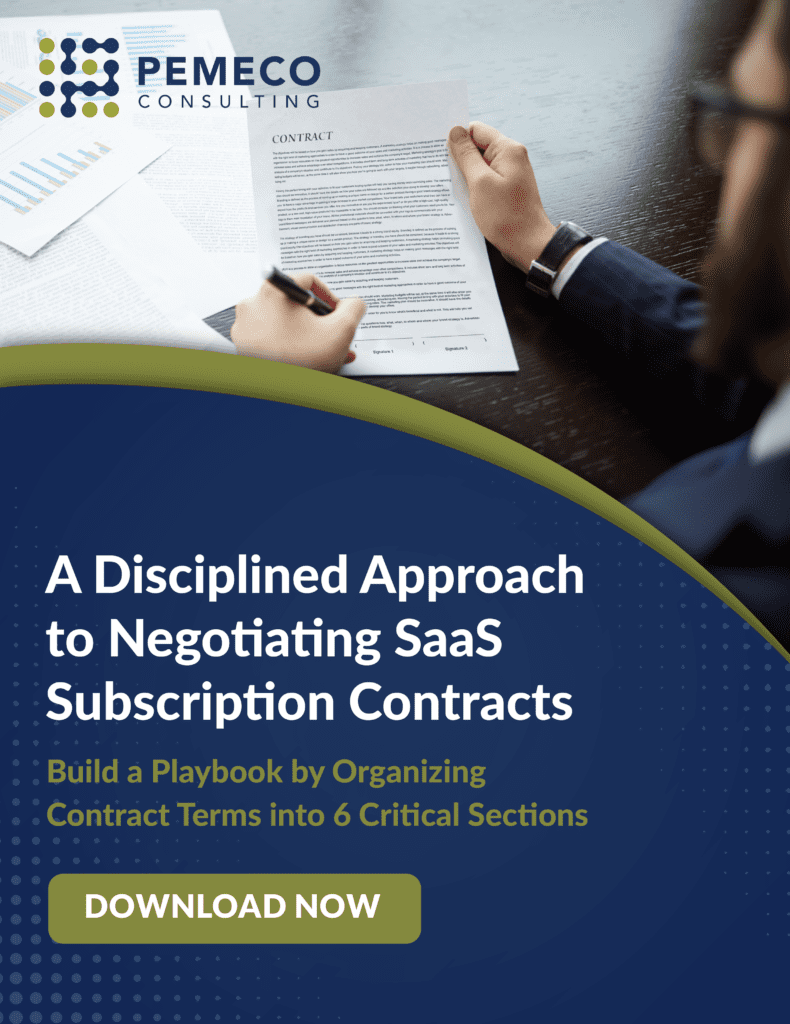Infor’s Convergence Strategy
Historically, Infor was known as a software aggregator. It purchased many, many ERP systems and banked the predictably recurring maintenance revenues streams.
Today, things are different. Infor has evolved from software aggregator to software developer (for the better). The vendor is rationalizing its portfolio of nearly 40 ERP systems (excluding standalone accounting and point solutions) and focussing on a strategic set of four, notably, LN, M3, S3 and Syteline.
What’s this mean for the 25,000 or 30,000 customers running its other legacy systems? Well, they’ll have to eventually find new systems. Infor is aggressively pushing them to converge onto one of its strategically important ERP platforms.
For example, Infor is pushing Adage, A Plus, LX, BPCS, Protean and System21 customers to M3. It’s pushing XA, MANMAN, PRMS and MAX customers to LN. And, Infor is guiding Visual and Fourth Shift customers to Syteline.
But what if Infor’s platform options don’t fit? When should legacy Infor customers consider other options?
Working with companies that operate legacy FACTS, BPCS, Trend and other systems, it’s become clear that there’s no simple path to convergence. The legacy software systems are fundamentally different in architecture and functionality. Implementation would largely be a full and fresh project with all of the standard complexities of change management, process reengineering, data migration, training and testing.
On the other hand, as an existing Infor customer, you’ll probably be offered financial incentives that might make convergence a more attractive option than the alternatives. So, how do you decide?
5-Steps to Deciding if Infor’s Modern Systems are Right for you
There’s no linear path to a decision. Some clients have a strategic relationship with Infor that they intend to preserve. Others have found show-stopping gaps in proposed replacement systems. And, other clients will only make a decision once they to see a full analysis of functionality, implementation, technology and ROI. A major challenge, of course, is evaluating decision-making criteria that seem to be incongruous.
Below are five best-practices to evaluating vendors, software and services. You can cherry pick from among them to decide how you want to evaluate options presented by Infor or others.
Step 1: Define your business requirements
Before contacting Infor and/or other software vendors to discuss their solutions, you should first define your business requirements.
These will provide your company with a baseline set of evaluation standards. The following are common components of a business requirements assessment:
- Corporate and organizational structure needs: This category includes needs relating to legal and logistical company structures, and a system’s ability to support your needs relating to centralized services, locally autonomous business services, and inter/intra-company transactions.
- Functional needs: This category is typically broken down by department and then by business process. Requirements should be listed and prioritized relative to their importance to your business.
- IT and other non-functional requirements: This category should include technology architecture, system sizing, performance, security and compliance needs. Usability is another category of non-functional needs and often includes navigation, search, interfaces to office productivity tools, workflow, reporting and dashboarding.
You should approach ERP as an opportunity to transform your business. And, this concept of transformation should be reflected in your business requirements. Modern systems have evolved tremendously over the past 15 years. The functionality improvements offer you new and better ways of business processing. So, your business process flows, data flows and requirements should reflect your company’s needs in a reengineered and optimized future state.
Step 2: Define your enterprise architecture options
ERP is central to a company’s applications architecture, but it’s usually not the only piece.
Generally, an ERP decision has implications on edge software needs, the platforms that enable and integrate various technologies and the infrastructures that house those technologies.
Thus, the next logical task is to map out enterprise architecture options capable of supporting your business needs.
For example, if you’re considering whether to converge onto a new Infor ERP software and platform, you’ll probably want to evaluate ION (Infor’s middleware), other integrated edge applications, and deployment on the AWS cloud, premise-based, hosted or other infrastructure.
If you’re unsure whether you would deploy a new system on-premises or in the cloud, you might craft various architecture scenarios and associated business cases for each. In many cases, permutations and combinations of options include one or more of the following:
- A best-of-breed architecture that involves integration of multiple solutions from multiple vendors.
- A best-of-suite architecture that includes multiple solutions developed on a common application development platform.
- A hybrid-cloud architecture that requires tools and capabilities to orchestrate between two environments (typically, premise-based and cloud).
- A two-tier ERP architecture that typically requires separate IT departments, platforms and infrastructure as well as integrations among systems.
Step 3: Build supporting project roadmaps for each architecture option
For each viable architecture option, it’s important to break down an implementation and support plan.
The roadmaps should span initial technology evaluation and extend out to post-implementation optimization and support. You can use the following as a guideline:
- Technology selection and implementation readiness: You’ll want to plan the tasks needed to evaluate, select and contract for applicable technologies. Also, during this phase, your business may need to undertake certain foundational projects that are key to getting your business ready for implementation. Oftentimes, projects span organizational structures, training, business processes, data and technical categories.
- Phase-1 implementation: You’ll want to plan the initial implementation effort relative to in-scope business functions and processes.
- Phases 2-onwards: You should also plan subsequent implementation and ongoing optimization efforts. These phases often include edge business functions and enhancements of core functionality.
Step 4: Build your business case: from total cost of ownership (TCO) to return-on-investment (ROI)
A TCO and ROI analysis should quantify the financial implications of the business needs, technology architecture options and implementation plans.
For the cost portion of the analysis. consider fee and expense items in the following areas:
- Software acquisition and support
- Other technology acquisition and support
- Implementation services
- Ongoing consulting services
- Internal staffing needs
For the benefits portion of the analysis, consider items in the following categories:
- Productivity enhancements and business processing efficiencies by department, usually valued as full-time equivalent (FTE) salary units
- Material and purchase cost benefits relating to:
- Materials management
- Production and quality management
- Logistics management
- External services cost-benefits, including those relating to reduced audit and compliance costs
- IT systems cost-benefits, oftentimes relating to the retirement of legacy systems and reduced reliance on external support
- Revenue uplift, if the adoption of new technologies has a high-probability of enabling sales (e.g. opening up new sales opportunities with EDI or portals).
Step 5: Define your decision-making methodology
In Steps 1 to 4, above, you’ve defined your various business, budgetary, technology and project needs. In this stage, you’ll want to evaluate how well the vendor, technology and service providers stack up against those needs.
Consider the following when building out your vendor evaluation methodology:
- Balanced, well-rounded due-diligence: You have access to a variety of methods to evaluate candidate vendors and their solutions. The most common include paid research, reference site visits, requests-for-proposals (RFPs) and software demonstrations.
- Evaluation criteria and decision-making process: Before you engage with vendors, you should clearly define your company’s decision-making criteria. These should include quantitative dimensions, such as total cost of ownership and feature/function-fit. They can also include qualitative dimensions, such as user interface layout preferences and vendor relationships.
- Mutual disclosure and communications: To encourage full and frank disclosure, all parties should execute a mutual non-disclosure agreement. To help vendors learn your requirements, consider disclosing the results of business assessments and making key users available for interviews.
Why engage Pemeco to help?
Because we’re in a unique position.
Because we will give you an unbiased assessment. We’re fully independent from Infor. We can give you a fair and balanced assessment of whether convergence makes sense or whether you should look at other options.
Because we have the detailed data. Our team has implemented 700-plus major projects, with Infor software accounting for nearly 100 of those projects. We’ve implemented all Tier-I, most Tier-II and many Tier-III ERP systems. We know their functionality and technology, and can provide you with detailed side-by-side analyses relative to your needs.
Because we’ll deliver your assessment quickly and cost-effectively. With our streamlined process, you’ll have a detailed assessment in-hand within weeks, not months. Your Steering Committee will have the multi-dimensional analysis it needs to decide whether to upgrade or open up its search to other vendors.
Can’t decide between upgrading or replacing your ERP?
Read our guide, Should You Upgrade or Replace Your ERP?
and get an actionable checklist.







